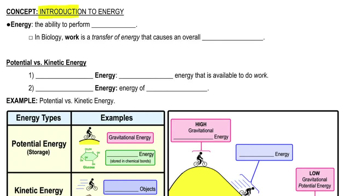Multiple Choice
Metabolic pathways in cells are typically far from equilibrium. Which of the following processes tend(s) to keep these pathways away from equilibrium?
1748
views

 Verified step by step guidance
Verified step by step guidance Verified video answer for a similar problem:
Verified video answer for a similar problem:



 2:17m
2:17mMaster Introduction to Metabolism with a bite sized video explanation from Bruce Bryan
Start learning